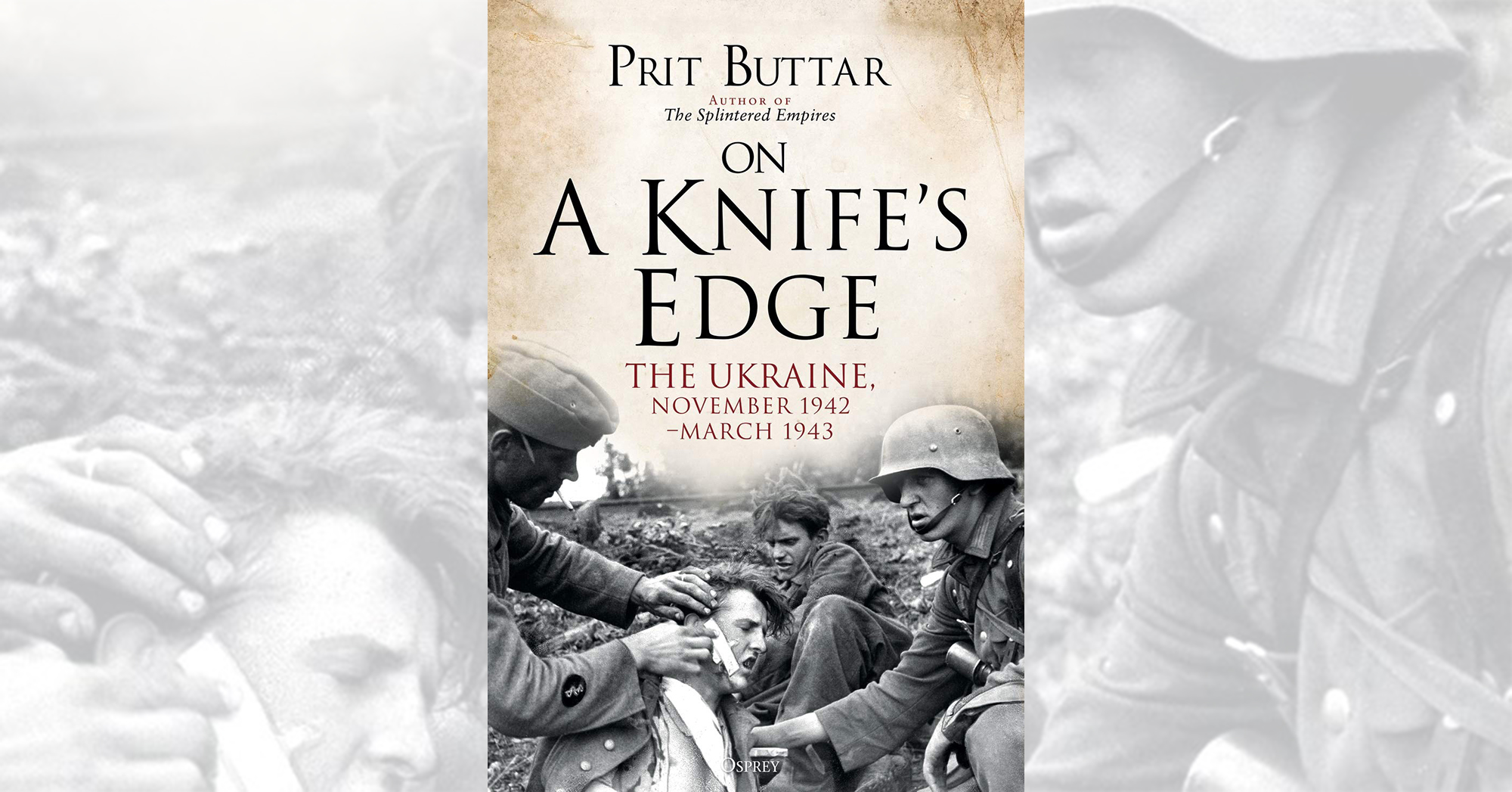On a Knife’s Edge: The Ukraine, November 1942–March 1943, by Prit Buttar, Osprey Publishing, New York, 2018, $35
Many histories of World War II’s Eastern Front in the winter of 1942–43 present a similarly simplistic narrative, with the Soviet encirclement of Stalingrad as the central—indeed, sometimes the only—major activity. In On a Knife’s Edge, however, author Prit Buttar properly sets Stalingrad amid the broader context of the winter campaigns in the Ukraine. He begins with the Soviet offensive and German mistakes that led to Stalingrad and continues through its aftermath, from the subsequent Russian attacks intended to end the war outright to the German counterattack that stabilized the front and bought Axis forces breathing room.
On a Knife’s Edge begins with an overview of the military situation in the early winter of 1942, describing the Soviet offensive, the encirclement of Stalingrad and the desperate but ultimately futile German attempts to save it. Buttar then relates the repeated Russian attacks that almost collapsed the front, leading to the near destruction of a German army and annihilation of four allied Axis armies. He follows up with an extensive look at Erich von Manstein’s counterattack against the overextended Soviet positions. The narrative concludes with the spring thaw, as the two exhausted opponents warily regarded each other across the muddy steppes and prepared for summer fighting.
In describing what he terms one of the harshest theaters of the war, Buttar also mentions war crimes carried out by both sides. He strives to be evenhanded and mentions the part locals (both communist partisans and pro-Axis paramilitary groups) played in perpetrating them. He also addresses the extensive difficulties each side faced with supply lines, logistics and the weather, which as much as the opposing armies dictated the pace and outcome of operations.
The sheer number of people and places involved can be overwhelming, but the publisher includes maps every few pages, while a list of dramatis personae up front helps the casual reader follow along. The resulting work is a fascinating read for anyone looking to better understand operations in the Ukraine surrounding what was perhaps the most infamous battle on the Eastern Front.
—David Harris





